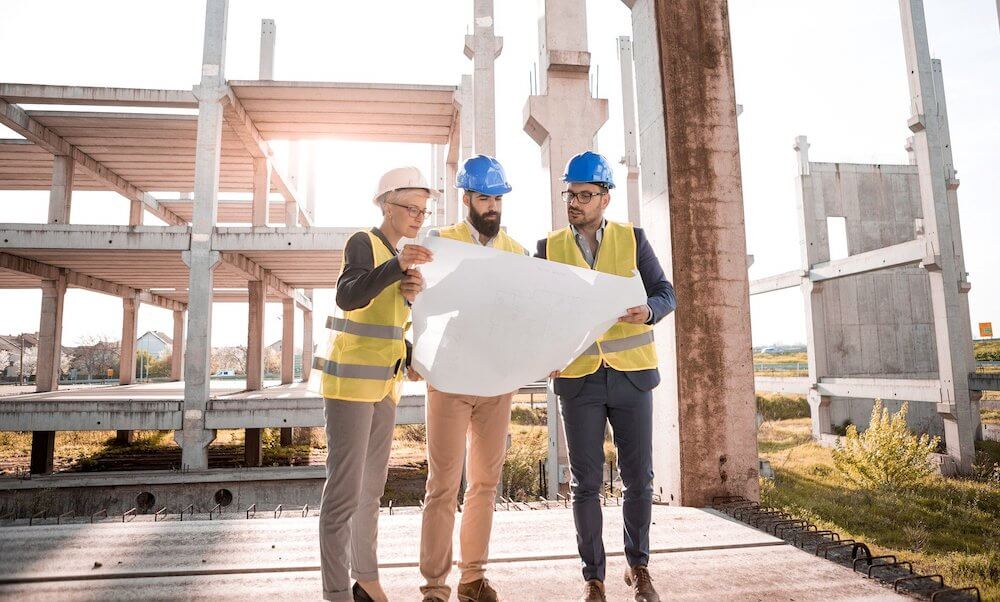Real Estate
Mortgage crises drive house prices down by 20%. End of Tenancy Cleaners will be the winners

If you still think that 2020 was the worst year ever, you’ve obviously slept through 2022 so far. With energy prices soaring and war-induced 40-year-high inflation, there isn’t an industry that was not hit hard by the post-covid crisis. This was not a genuine surprise, as experts had predicted high inflation and market shrinkage a year ago. However, what they couldn’t take into consideration was Putin’s imperialistic obsessions, which spiked the crises out of control and produced what we see today.
Still, a genuine surprise was the ever-climbing housing market. For seven months straight, housing prices have been going up and the market scaled by 15.5% annually by the end of July.
However, over August and September, the housing market didn’t just slow down but began shrinking. Moreover, with October passing its midpoint, the housing market decline seems to be speeding up.
Why didn’t the housing market continue to rise
There were several factors which led to the rapid rise of the housing market, despite the inflation and volatile industry. The first of many was the Covid crisis, which deterred people from spending too much. Naturally, they managed to accumulate significant capital. In addition, the high inflation introduced another factor, as it pushed those who managed to save money, to invest further and not lose them to inflation. Moreover, the pandemic made it painfully obvious what are the benefits of owning your own place, especially one outside the big urban centres. The final nail in the coffin was the relentlessly rising rent cost, which, unlike wages, rapidly increased. By June 2022, the average rental price in the UK increased up to 3.6% for a 12-month period.
All these factors pushed people to seek housing opportunities despite the expectations that the Bank of England would raise the interest rates. After all, many concluded that if they would pay massive sums each month, it’s better to make it toward their own home rather than just pay a landlord.
On the other hand, many who were saving for a second or third home were forced to choose whether to let inflation take a huge bite out of their savings or invest it in a bigger, better and newer home.
All of this drove the housing market up, but as we are preparing for the next increase in interest rates, it seems that the housing market will finally take a blow.
Why is a mortgage crisis expected?
The Bank of England announced yet another aggressive interest rate increase in November to battle the ever-increasing inflation. This might bring some peace of mind in other markets, but the increase will actually make things worse when it comes to the housing market. Private banks in terms will increase their interest rates towards their customers, so people will have to pay higher amounts to cover their mortgages. For example, the interest on two-year fixed-rate mortgages has more than doubled, rising to 5.17% compared to 2,57% in March 2021. The five-year fixed-rate mortgage has done the same, reaching 5.1% compared to 2.75% in March 2021.
This means that many won’t be able to cover their loans, as some estimates claim that millions would not be able to afford to deposit their monthly payments. On average, a person who took a £100,000 25-year mortgage at a rate of 2% pays £424 monthly. However, if the interest rate goes to 6%, as is the BoE plan for next year, this would mean that the monthly payment will rise to £644. Many won’t be able to afford this drastic change. Thus it will lead to a mortgage crisis.
From the mortgage crisis to the housing market collapse.
Since many won’t be able to afford their monthly payments, they will be forced to sell their homes. Moreover, many would try to sell their homes in panic, as they will be afraid of even higher increases next year. The significant drop in mortgage applications and the fact many landers suspended most of their mortgage products means the housing market is not just in crisis but should be ready for a free fall. High offering and low demand are usually a recipe for disaster in any market. Experts expect the real estate cost to drop as much as 20%.
According to UK’s National Statistics, the average house price in the UK was £292,118 in July 2022. If the experts’ predictions come true, soon a new home in the UK could be bought for as little as 233.7 thousand (on average)
Is there a silver lining?
It’s hard to imagine there will be any winners in this horrific scenario which is currently unfolding. However, if we have to find a bright side to this, there will be some industries that will probably benefit from the housing market’s downfall. For example, people who already have the money or can afford the constantly increasing mortgage prices will have the opportunity to get a new home with a 20% discount. Landlords will also take a significant boost from the collapsing market, as many would have to go back to renting. With the skyrocketing rental prices, this turn of events is more than welcome for many rental apartment owners.
However, the biggest winners will be the service sector, which takes care of preparing homes for sales and new residents.
End-of-tenancy cleaners will enjoy a busy winter.
EoT is an essential service when you want to let your home look stunning before selling it or whenever you are switching your permanent residence. Although the money will be tight in most cases, many would prefer to hire a professional team to prepare their homes for sale, as it will drive the price up. Moreover, an end-of-tenancy cleaning is a one-time spend that significantly increases the property’s value. For example, the price range for one of the most prominent end of tenancy cleaning companies in the UK, Fantastic Cleaners, shows that the average price for a single-bed home goes from £180 to £210, depending on the area. This is a small price that can easily increase the value of your home by up to several thousand pounds.
Moreover, storage providers, staging companies and others will also experience a boom, especially with fewer potential clients on the line. The significant reduction in demand will force sellers to upstage their competition in order to sell without drastically lowering their prices, so any trick in the book will come in handy.
There is a hard winter coming
Despite the opportunity for some home services sectors, the mortgage crisis portend one truly harsh winter. High inflation and the inability to strike good mortgage deals will force people to seek other ways to save their money, which may lead to funds draining away from the UK economy. So how will our lawmakers deal with this impending crisis? We will have to wait and see.
Real Estate
5 Budgeting Tips For Your Home Maintenance Needs


A home’s systems and appliances play a critical role in daily life, so it’s important to make sure they are performing as needed. Keeping track of the system’s age and any past repairs can help you anticipate future costs.
Experts recommend saving at least 1% of your home’s value per year to prepare for maintenance costs. However, this can vary depending on your home’s exact location. Better options include home warranty policies that can save a lot of money on costly repairs.
- Set a Goal
Keeping up with regular maintenance can lessen the need for costly repairs in the future. However, emergencies will inevitably arise and it’s important to prepare for them.
Many experts recommend saving 1 to 2% of your home’s value each year to cover unexpected expenses like a new roof or appliances. But, this number might not work for every budget.
A better option is to save a set amount each month for your home maintenance needs. This can help you avoid dipping into emergency savings and minimize your chance of going into debt to pay for unexpected repair costs. When setting up your budget, remember why you started and keep your goals in sight. This will help you stay motivated even on those days you don’t feel like budgeting.
- Set a Time Frame
Performing regular maintenance helps to keep everything in good working order. Even small fixes like caulking the tub and cleaning out the gutters can help prevent serious problems down the line.
Make a list of all the tasks that need to be completed and determine how often they should be done. It’s important to create a schedule that accounts for both the indoor and outdoor maintenance needs of your property.
Set reminders and use a calendar or list app to help you stay on track. If you prefer paper, try a notebook with dedicated spaces for each task.
- Make a Checklist
Keeping up with home maintenance tasks can be challenging, and it’s easy to miss important chores. Creating a checklist is a great way to keep track of these tasks and ensure they are completed on a regular basis.
Performing regular maintenance on your home can help prevent future damage and save you money. For example, cleaning out your dryer ducts each month can drastically reduce the risk of fires caused by lint buildup.
Similarly, resealing your windows can help increase the insulation of your home,
reducing how hard it has to work to maintain a comfortable temperature. This can save you a significant amount on energy bills in the long run.
- Make Small Contributions
When you save money for home repairs, it’s important to start small. Adding a few dollars a month to your savings can help ease the upfront cost of major projects like a new roof, sewer upgrade, or replacement appliances and systems.
Financial experts generally recommend homeowners set aside 1%-4% of their property’s value for upkeep and repairs. However, this number may vary depending on the age of your home and its current condition.
Consider opening a separate savings account to make it easier to resist the temptation to withdraw this money for other expenses. You can also use a budgeting app to track your spending and make it easier to stick to a savings plan. Try Experian Boost(r) to see how saving for home maintenance can impact your credit score.
- Set Up a Savings Account
As a homeowner, it is important to set aside money for routine maintenance and emergency repair expenses. A savings account is a good place to keep these funds. It’s also important to use an account that is easy to access, like a high-yield savings or money market account.
Many experts recommend saving 1%-4% of your home’s value. This method takes into account the age and condition of your house. It’s also a good idea to budget for one-time costs, such as lawn care and snow removal.
If you are planning on replacing your roof, for example, calculate how much it will cost and save accordingly. This will help you avoid hefty borrowing expenses. You should also consider the average yearly expenses for other maintenance items, such as HVAC repairs and paint touch-ups.
Real Estate
A Step-By-Step Guide to Building Your Own Commercial Property


Owning a commercial property might be a prudent investment in today’s thriving economic environment. It gives you security and control over the location of your company, and it can also provide rental money. However, creating your business property is a difficult task. It necessitates meticulous preparation, close attention to detail, and in-depth knowledge of the building procedure. This comprehensive guide will guide you through the necessary processes to construct your business property.
1. Define Your Purpose and Budget
Setting a purpose and budget for the construction of your business property is the first and most important phase. You must have a distinct idea of the kind of property you want and the purpose for which it will be used. Will it be a mixed-use building, a retail store, or an office building? Take into account the location, scale, and particular needs of your company. Additionally, you need to decide on your budget and set aside money for all project costs, from land acquisition to building.
2. Find the Right Location
Regarding commercial real estate, location is the most important consideration. The success of your property hinges on how visible, approachable, and close to your target market. Make sure the zoning laws in the area you choose are in line with your planned use by researching the places that are appropriate for your type of business. If you’re looking for the help of professionals, you might want to think about hiring local architects, such as a commercial architect in colorado if you live in CO, who are aware of the area’s construction standards and regulations.
3. Assemble Your Professional Team
A committed team of experts is needed to walk you through the challenging process of commercial property construction. Architects, engineers, contractors, and legal counsel should all be important components of your team. These professionals will make sure that your project is created effectively and safely and complies with all legal criteria. Prioritize credentials and standing when picking professionals, and don’t be afraid to enlist referrals.
4. Obtain Necessary Permits
You will need to obtain the necessary permits and authorization from the government in the local area before you can start construction. These permits could include zoning permits, building permits, permits for conducting environmental impact assessments, and perhaps more. The procedure can take a lot of time, but it is necessary to guarantee that your project is in accordance with all of the rules and regulations.
5. Design Your Commercial Property
During the design process, your concept will start to take concrete form. Your property’s architects will collaborate closely with you to develop comprehensive designs and blueprints for your commercial establishment. This stage requires thoughtful consideration of the building’s aesthetics, layout, materials, and function. Incorporating sustainability measures and energy-saving features is also a chance to do something both economically advantageous and environmentally responsible.
6. Choose a Reputable Contractor
It is essential to the success of your commercial property project that you choose the best possible contractor. Try to find a reliable contractor who has a history of delivering high-quality work on time and without exceeding the allotted cost. Make sure you get numerous quotations and then compare them so that you can make an educated choice. To further protect your interests, check that the contractor possesses all the necessary credentials, including a license, a bond, and insurance.
7. Start Construction
It’s time to break ground and begin building once you’ve secured all the permissions, your design drawings are ready, and you’ve decided on a contractor. Site preparation, foundation work, structural framing, and interior finish-out are all included in this phase. Regular site visits and communication with your contractor will keep you updated on the project’s progress and enable you to handle any unforeseen difficulties that can appear.
8. Inspections and Quality Control
It is imperative to carry out inspections to ensure that the property satisfies all requirements outlined in the applicable building rules and regulations as construction draws to a close. These inspections might look at the environmental regulations, the structural integrity, the safety features, the electrical and plumbing systems, and more. Take care of any problems that can crop up during inspections in order to guarantee that your property is ready to be occupied.
Conclusion
It takes extensive planning, teamwork with experts, and attention to legal and regulatory standards to construct your commercial property. The procedure can be challenging, but with the appropriate team and a focused vision, you can produce something that will be a benefit for your company. Remember the value of location, subject-matter expertise, and meticulous project management as you proceed on this trip. You can successfully create and manage your business property by following these procedures and working with qualified experts.
Sources:
https://navimumbaihouses.com/blog/news/top-six-tips-for-building-your-own-commercial-property/
https://www.marchassociates.com/2018/6/26/5-things-you-must-consider-before-constructing-a-commercial-building/%20
https://www.indeed.com/career-advice/career-development/what-is-commercial-building
Real Estate
What is the Recommended Frequency for Masonry Maintenance in Your Building?


Masonry buildings are constructed using masonry materials. Masonry, also known as brick and block, is one of the oldest building materials on earth. It has been used for thousands of years to construct homes, churches, schools and other structures. The durability and fire resistance of masonry make it ideal for many types of buildings and applications. However, you need to maintain your building regularly so that it can last longer without any problems.
Masonry buildings are constructed using masonry materials.
Masonry buildings are constructed using masonry materials. These include stones, bricks, concrete blocks and other similar products. Masonry is used for walls, floors and roofs of buildings to make them strong and durable. It is also an excellent insulator against heat transfer between inside and out during summer months.
Why is Frequent Maintenance Necessary?
Masonry is a natural material that can absorb water. If you don’t maintain your masonry, it could become unsafe. Masonry may crack or crumble if it’s exposed to moisture for too long and without proper care.
You should perform maintenance on the exterior of your building every 3-5 years in order to keep it looking great and functioning properly throughout its lifespan.
How often you should maintain your building depends on its type and use.
How often you should maintain your building depends on its type and use.
- For example, if your building is new and hasn’t been in use for very long, then it might not need any maintenance at all right now. However, as time goes on and more people start using the building regularly, or if there are weather conditions that affect masonry (like rain), then it would be a good idea to start thinking about maintenance sooner rather than later so that any potential problems can be fixed before they become major ones.
- Similarly, if the structure has been around for several years without any major issues cropping up then there may not be much reason to start thinking about doing some work on it right now either – but again: depending on where you live/what kind of climate conditions exist there could come a point when these kinds of issues arise anyway!
How to Maintain Your Building
- Use masonry contractors. If your building is in need of maintenance, it’s best to use a professional masonry contractor who has experience with the type of materials used in your structure. This person can determine what repairs are needed, how long they will take and how much they’ll cost.
- Keep an eye on the building’s condition. Making sure that your building stays in good shape requires regular inspections by professionals or knowledgeable members of your staff or both! Regular inspections will allow you to identify issues early on before they become major problems down the line, which means less money spent overall on repairs later on because all problems have been taken care of before they become serious issues.
- Keep building materials in good condition: Make sure there aren’t any cracks or holes in any walls or floors; check doors and windows regularly (especially around hinges); look out for signs like peeling paint or mold growth that might indicate water damage has occurred somewhere inside; check ceilings regularly for signs like stains due to condensation buildup caused by poor insulation quality levels within insulation material layers themselves – this means something needs changed about those particular areas so moisture doesn’t continue collecting elsewhere throughout other parts.
We recommend that you contact a professional masonry contractor to perform routine inspections and repairs on your building. The frequency of maintenance will depend on the type of material used, how often it’s exposed to weather and other elements, as well as the use of the building. If you have any questions about how often your building should be maintained, please contact us today!
-



 Biography5 years ago
Biography5 years agoJacqulyn Elizabeth Hanley is the Mother of Liza Soberano?
-



 Home4 years ago
Home4 years agoEpson L3110 Driver Free Download Latest Updated Version
-



 Games3 years ago
Games3 years agoBest Free To Play MMORPG To Try This 2021
-



 Biography5 years ago
Biography5 years agoAmanda Levy Mckeehan Biography, Family, Net Worth, Age, Affairs, Facts
-



 Biography5 years ago
Biography5 years agoWho is Rose Dorothy Dauriac? Scarlett Johansson Daughter?
-



 Biography5 years ago
Biography5 years agoJessica Ditzel Secret Information that Nobody Knows | Joe Rogan’s Wife
-



 Biography5 years ago
Biography5 years agoWhat is the relation of Nathaniel Larry Osorno with Liza Soberano?
-



 Home5 years ago
Home5 years agoLiza Soberano Biography, Age, Family and Boyfriends































